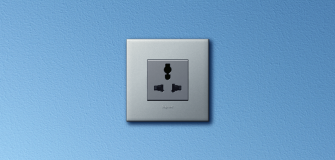6 Ways Commercial Buildings Can Achieve Energy Efficiency With Connected Devices
6 Ways Commercial Buildings Can Achieve Energy Efficiency With Connected Devices
With improvements in technology, commercial buildings can drastically lower costs and move towards more eco-friendly and sustainable ways of conducting business.
How?
With the assistance of connected devices, of course!
But, how can connected devices and energy meters help save energy? Well, data-collecting sensors and energy meters are strategically scattered throughout facilities to know precisely where and how energy is utilised.
This information can then be scanned to make pivotal changes in building operations, mainly through intelligent, interrelated infrastructure.
Today, several large companies utilise connected applications and renewable energy sources to maximise the benefits offered by this technology.
Before we take a further look at how connected devices promote energy efficiency, savings and sustainability in commercial buildings, let’s go over why HVAC systems are the highest energy consumers worldwide.
HVAC Systems: The Highest Energy Consumer In Commercial Buildings
Energy consumption is a significant cause for concern in buildings where heating, ventilation, refrigeration, air-conditioning, or HVAC systems are responsible for over 60% of the energy usage.
All commercial buildings experience HVAC failures, and a large amount of energy is wasted due to malfunctions in either the control systems or equipment itself.
An example: When part of a building gets stuck in a heating/cooling loop.
This occurs when the HVAC cools a room below the set temperature levels. The control system then tries to account for this drop by bringing it back up to a comfortable level.
Since occupants aren’t alerted, equipment technicians are in the dark about these changes as well.
This glitch is only discovered when electricity bills come back higher than usual. Costs can increase even more as service engineers struggle to identify the right reason for spikes in energy consumption and fail to repair the equipment swiftly.
With that, here are three ways in which connected devices can be used to reduce and monitor energy consumption in commercial buildings:
1.Ventilate When Necessary
IoT sensors are advanced enough to monitor air quality, especially CO2 levels, in any commercial building.
Since buildings are rarely filled to capacity, most businesses end up over-ventilating their office spaces, leading to an increase in energy consumption and wastage.
Additionally, the air coming from outside every time someone enters or leaves the building has to be cooled or heated, leading to more energy wastage.
By implementing a controlled ventilation system, CO2 levels can be monitored (to figure out the occupants’ number), and ventilation can only occur when necessary.
As a result, heating or cooling units use minimal amounts of energy.
2.Reduce Peak Time Energy Usage
Energy is an essential resource, but its value depends on the season and time of day.
For example, on a scorching summer day, when everyone uses their air conditioners, electricity prices may increase as providers struggle to keep up with demand.
Thus, an extremely effective strategy to ensure energy efficiency is through peak shaving.
This involves monitoring load signatures of buildings with connected devices and determining the equipment required for peak demand. By making adjustments to operations, excessive demand charges can be negated.
In this way, energy can be used strategically to reduce a building’s maximum power grid requirement while still ensuring its comfort level is maintained.
Smart multifunction meters with energy management systems should be used to participate in demand response programs. Applications usually rely on these programs to increase their capacity, and financial incentives are offered to companies willing to limit their energy usage during peak hours.
Curtailment service providers enter into contracts with independent system operators, who pay companies to reduce energy usage during conservation periods.
This procedure is more efficiently implemented with smart meters and smart grids, which collect power-usage data for appliances, machinery and HVAC systems.
Like peak shaving, companies can assess which practices demand the most energy, and alter energy use patterns according to these analytics.
3.Renewable Energy For The Win
Environmentally sustainable green practices can boost a company’s brand value and significantly reduce commercial building costs.
Whether you use solar, mechanical, water or wind energy, connected efficiency plays a crucial role in sustainability.
For example, every solar installation is accompanied by a solar power device that monitors both external conditions (like the sun’s radiance) and aspects of system performance (such as system output and battery storage levels).
Connected devices can monitor and change temperature, lighting and energy consumption, thus producing a wealth of data to improve the overall performance of commercial buildings.
Other Ways in Which Connected Devices Can Reduce Energy Wastage Include:
- Real-Time Condition Monitoring: Monitoring the condition of HVAC in real-time can ensure that intervention technicians are dispatched only when necessary, instead of periodically. Thus, condition monitoring can increase uptime and decrease the cost of maintenance.
- Remote Diagnosis: Performing a root-cause analysis for HVAC malfunctions before sending field engineers is necessary. Remote monitoring and diagnosis through connected devices can be used to decrease site visits & improve fix rates.
- Predictive Maintenance: Continuous monitoring and predictive capabilities of Building Management Systems can help building managers take corrective action before building occupants notice any problems.
Thus, predictive maintenance can:
- Eliminate maintenance costs
- Eliminate losses due to equipment breakdowns
- Decrease downtime of important equipment
- Increase product lifespan
Integrate These Strategies for Maximum Benefit
While the above tactics are exceptionally useful on their own, they’re even more impactful once combined.
For example, renewable energy options, such as thermal energy storage, solar power, battery power and more are frequently used to minimise power and meet the necessary power reduction requirements for demand response events.
Thus, reducing the energy required for ventilation will also allow commercial buildings to reap the benefits of demand response programs.
With Legrand’s help, buildings can enjoy efficient power protection and effective service all year long.
We provide fast-deployable solutions integrating cutting-edge technologies for all sectors.
With our Smart Energy Meters (EMDX3), one can measure overall energy, i.e., water, air, gas, electricity & steam, to attain complete efficiency.
One can even connect, control & communicate the installation with a Smart Energy Management System like CX3.
Putting together a high-quality, energy-efficient distribution system has never been easier.
For the cherry on top, Our Eliot program converges energy and IoT to ensure maximum impact. This technology supports the development of suitable digital infrastructures for buildings, promotes interoperability and improves user experience through injecting the power of communication into Legrand’s products and services.
What are you waiting for? Visit our website to know more about #IntelligentEI: Legrand – Energy Distribution




















